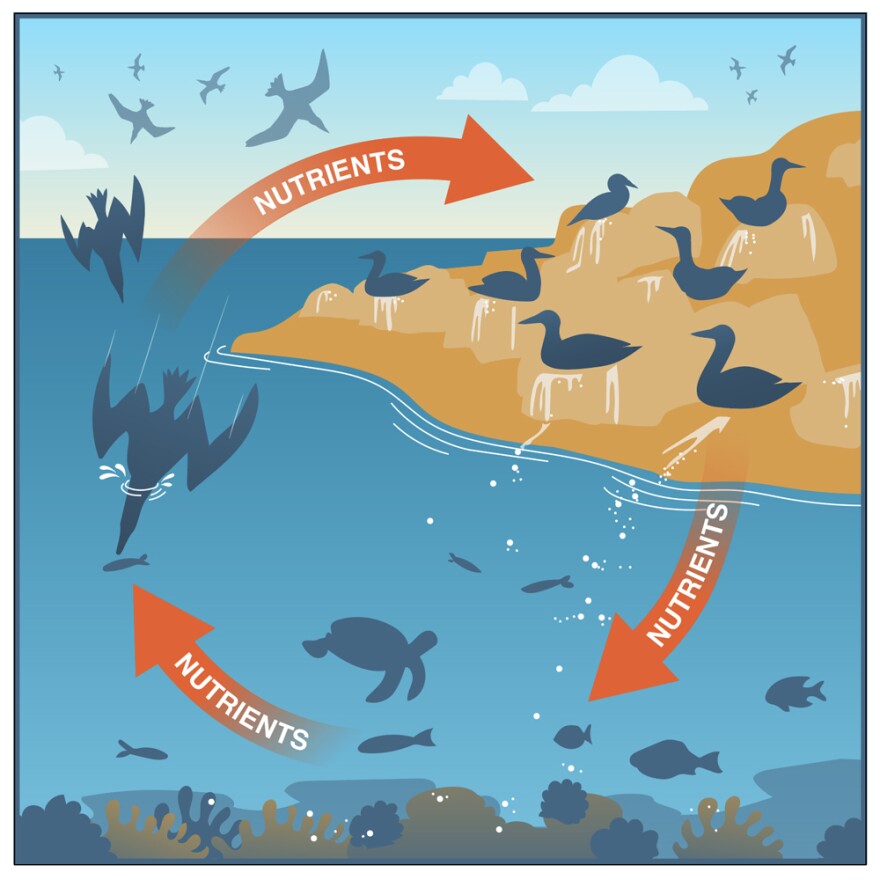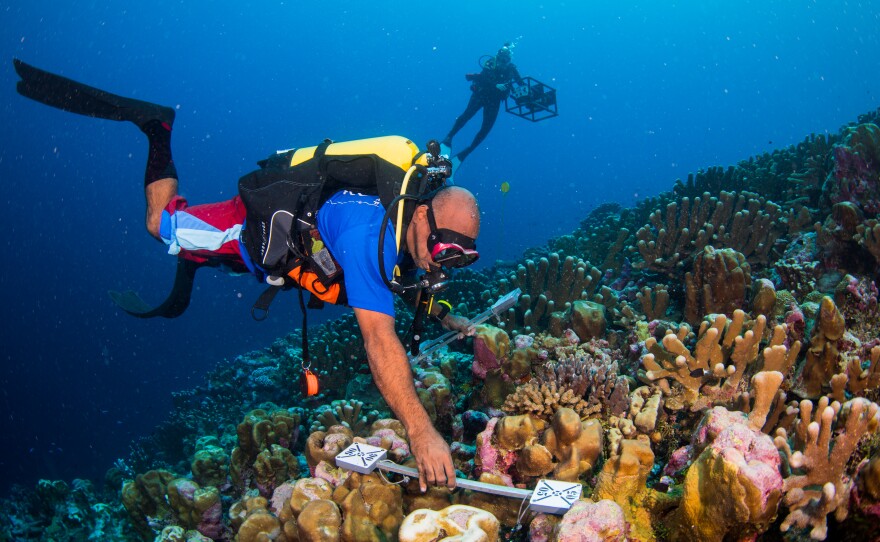New research out of San Diego found a critical link between islands and the oceans surrounding them, and how biologists should consider those connections when studying islands and their habitats.
A Scripps Institution of Oceanography report suggested island habitats would be better understood if researchers didn’t try to divide them into above-water and below-water biological systems.
A study co-author said there are plenty of examples where connector species have an impact on land and in the ocean.
Seabirds, which have populations that have been decimated around the world, hunt in the ocean and deposit nutrient-rich guano on islands.

“Where the population of seabirds is small, the connection is small,” said Stuart Sandin, a marine biologist at the Scripps Institution of Oceanography. “And if the population is large, we may see a lot more connectivity of these nutrients going from land to sea.”
Islands with lots of seabirds have more fish, faster growing coral reefs, and better resilience to climate change.
“I see a huge opportunity in this,” Sandin said. “Linking our knowledge bases and reducing some of this siloing of conservation — of science, of perspective — that’s currently in our narrative of land management versus sea management, and instead think about integrated island management.”

Research that combines the impacts of both systems, can lead to better understanding about habitats that have unique plants and animals. And the approach can inform restoration efforts.
The report highlighted a handful of ways that island-ocean restorations can have benefits above and below the water line.
For example, restoring islands near marine protected areas, where fishing is off-limits, can have significant beneficial impacts on the ocean.
And there are plenty of examples of islands that have been overrun by invasive species like rodents or goats, illustrating how fragile the above water habitats can be.
“All told, Islands hold a disproportionately far greater rate of extinction and endangerment per unit area, than mainland,” said Nick Holmes, of the Nature Conservancy. “And yet some of our most major conservation successes have been on islands.”
Island habitats are also home to cultures and communities that have a long history of connecting the world above and under water.
“The island people, especially indigenous island people have always talked in that way,” said Kate Brown of the Global Island Partnership. “I think what we see is a greater recognition, outside of the indigenous space, that this is actually a reality and we can do something about it.”

The findings are published in the current edition of the Proceedings of the National Academy of Sciences.
-
A local biologist's own experience gives him a deep understanding of the science and culture of deafness. In other news, the city of San Diego's ambulance provider, Falck, is offering sign-on bonuses as it faces staffing shortages ahead of an expected busy season for hospitals.
-
The San Diego Unified School District has been hit by a cybersecurity threat. Also, city officials face a dilemma on how city towing policies should handle people living in vehicles.









